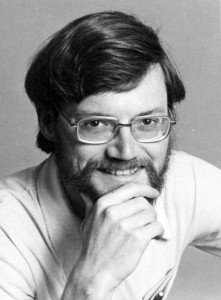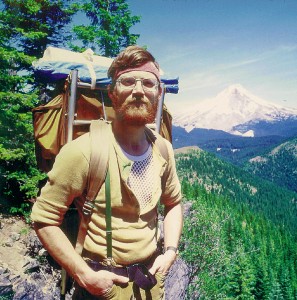“Photography is a small voice, at best, but sometimes – just sometimes – one photograph or a group of them can lure our senses in awareness.”
Photographer W. Eugene Smith
 These words, written on a small scrap of paper, hung in the darkroom of Reid Turner Blackburn, a photographer for The Columbian in Vancouver, Wa., and a victim of the May 18, 1980 eruption of Mount St. Helens. Above that scrap of paper with Smith’s words, Reid kept one of his favorite photographs. It was that of a wide-eyed kitten peering from a Humane Society cage, silently pleading, it seemed, for a new owner to save it from certain death (fourth picture in link).
These words, written on a small scrap of paper, hung in the darkroom of Reid Turner Blackburn, a photographer for The Columbian in Vancouver, Wa., and a victim of the May 18, 1980 eruption of Mount St. Helens. Above that scrap of paper with Smith’s words, Reid kept one of his favorite photographs. It was that of a wide-eyed kitten peering from a Humane Society cage, silently pleading, it seemed, for a new owner to save it from certain death (fourth picture in link).
Reid was working for The Columbian and donating his time to National Geographic magazine and the U.S. Geological Survey at an observation camp about seven miles from the volcano. His job was to operate radio remote-control cameras that had been placed to observe the mountain’s activity. Radio contact with Reid was broken with the Sunday morning eruption. Four days later, his body was found in his car, which was buried to its windows in ash. At the time of his death, he had been with The Columbian for five years and married to his wife, Fay, for just nine months.
He was born in Washington, D.C., on Aug. 11, 1952 and spent his early years in Maryland. His family moved to Oregon in 1962. Known for his wry humor and meticulous work, Reid first got serious about photography during his years at Wilson High School in Portland, Ore. By the time he entered Linfield College in McMinnville, Ore., he had chosen photojournalism as a career.
 Reid was an avid outdoorsman – a backpacker, bicyclist, mountain climber and cross-country skier. He had climbed Mount St. Helens several times. He belonged to the Clark County Amateur Radio Club, a hobby since childhood, and was a member of the National Press Photographer’s Association. He enjoyed music and was a self-taught accomplished musician of the guitar, mandolin and flute.
Reid was an avid outdoorsman – a backpacker, bicyclist, mountain climber and cross-country skier. He had climbed Mount St. Helens several times. He belonged to the Clark County Amateur Radio Club, a hobby since childhood, and was a member of the National Press Photographer’s Association. He enjoyed music and was a self-taught accomplished musician of the guitar, mandolin and flute.
He once wrote, “Newspaper photography, or photojournalism if you wish, offers me more than any other branch of the art. In most commercial work, feedback is from the client, and that’s about it. In a newspaper the potential for feedback is tremendously great. Each assignment is how I realize mistakes, how I find success, how I improve.” Reid felt his job was to provide informative pictures that documented life in an unbiased manner. “I have always been intrigued by magic and intricate gadgets. A camera is an absolute marvel of tiny moving parts and shiny glass … and it produces what are often magical images … pieces of unrealized history.”
View a sample of Reid Blackburn’s photographs.
A roll of Blackburn’s unprocessed film was discovered and developed in December, 2013.
